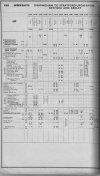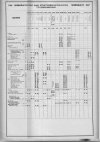Was looking at some marshalling documents (on the brcoachingstock groups.io group) the other day and I noticed one unusual service: the 1717 Manchester-Didcot IC service from 1981/2.
It looks like it was an LM set, and worked empty to Oxley after terminating at Didcot, which is presumably why it didn't do the obvious thing and continue to Reading. Nonetheless, if there was demand for Oxford one might expect it to terminate at Oxford instead, but maybe terminating the train there would have caused disruption at a station with only two through platforms (as the loco would have to run round), so it was sent on to Didcot instead.
So any other examples of apparently 'random' termination points? I am excluding extensions to cover peak services (e.g. a Manchester-Bristol then becoming a stopper to Weston-super-Mare in the evening peak) as that has been covered in another thread.
There was a period during the late 60s and early 1970s when Birmingham Moor Street became a very quiet affair.
Snow Hill had gone, the tunnel closed and just the North Warwickshire locals terminated there (the Leamington line locals terminated at New Street).
A precursor for the attempted closure of the North Warwickshire line and hence closure of Moor Street itself. The off-peak service was just one train an hour with alternate trains terminating at Henley in Arden and Stratford.
However, one morning rush hour train arrived in from Didcot and then immediately returned, a strange working given that by that time everything else was using New Street, rumour had it that is was worked by a class 123 Inter City DMU.
Fast forward to the 1990s, there was a summer only all day limited stop New Street - Stratford service, via Hatton, at the time normally peak only.
I took a ride intending to return to New Street to catch the peak time commuter extra running only as far as Tamworth (it turned out to be the same set that had taken me to Stratford), reason being it was one of only a very few trains routed via Whitacre Junction and the Kingsbury loop.
Thing is I never did understand how the train terminated at Tamworth, after dropping off the passengers it just disappeared to the north.
During the mid to late 90s, there was a morning peak train that started back at Worcester that terminated at Solihull, even tho it still had to run thro to Dorridge to turn back, and there was a morning peak train from Dorridge which terminated at Jewellery Quarter, then running ecs to periodically Queens Head, or Langley Green to turn around to run ecs to Birmingham Snow Hill to go back into service.
I'm old enough to remember the early 1970s and those peak time Snow Hill to Langley Green workings that terminated in the bay platform.
The bay was on a short freight only branch to a local chemical works.
At the time, Snow Hill was the largest unstaffed halt in the country with just a few peak time services to Wolverhampton and Langley Green, everything else on the Stourbridge line worked into New Street.


